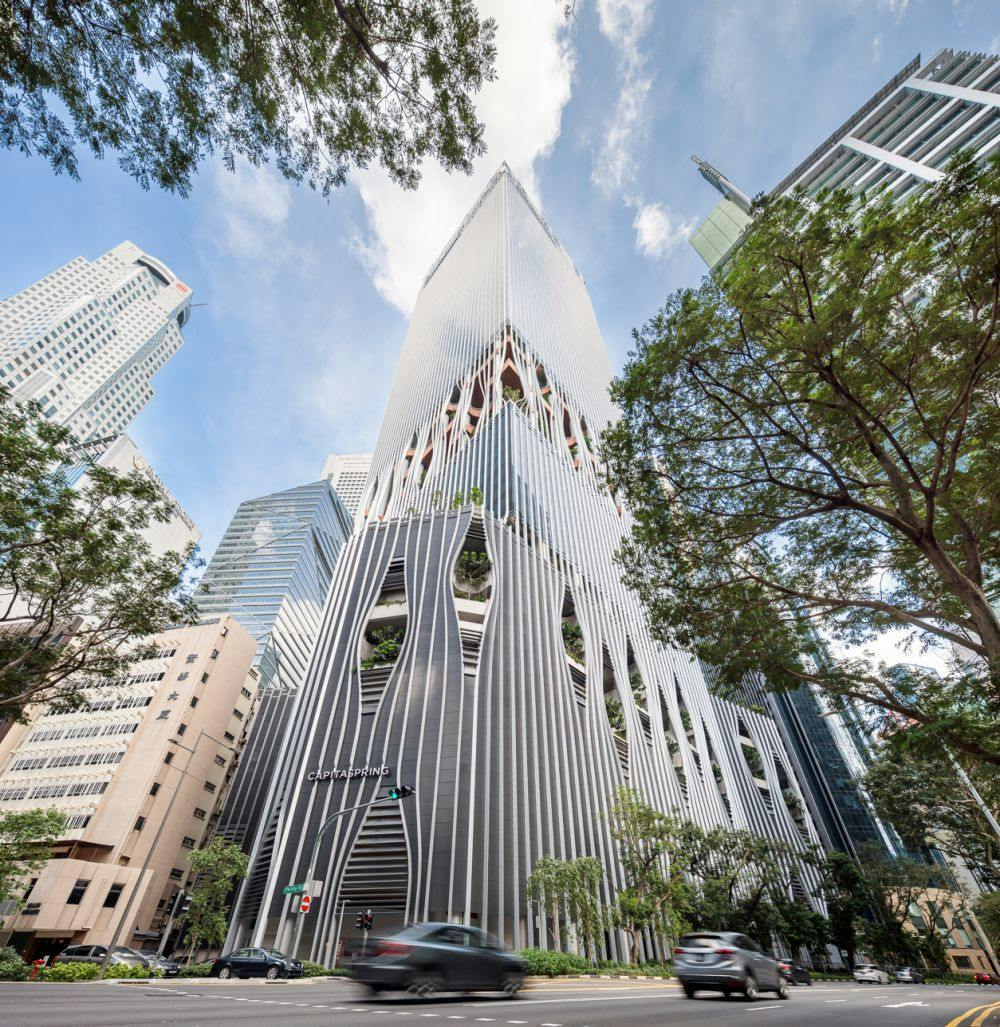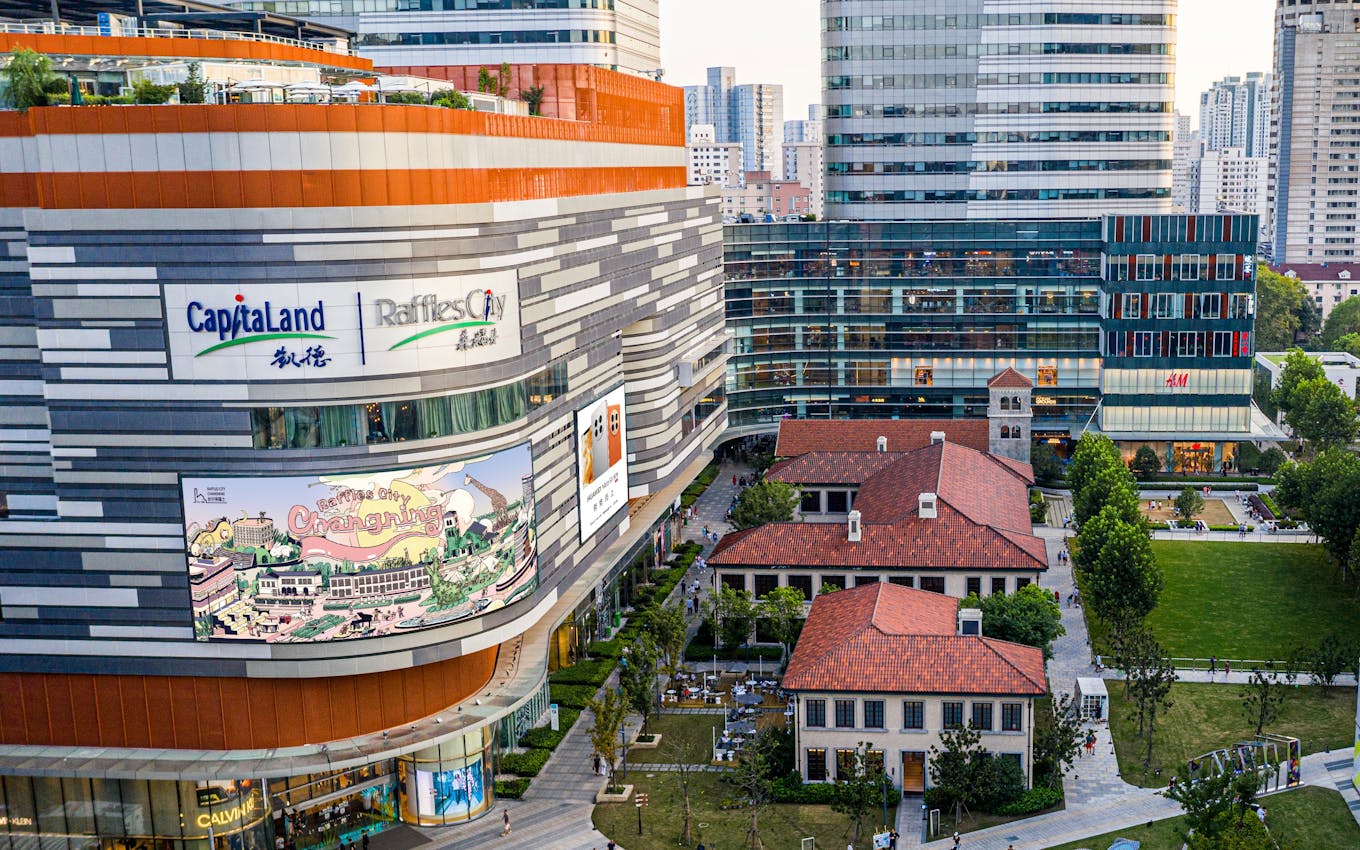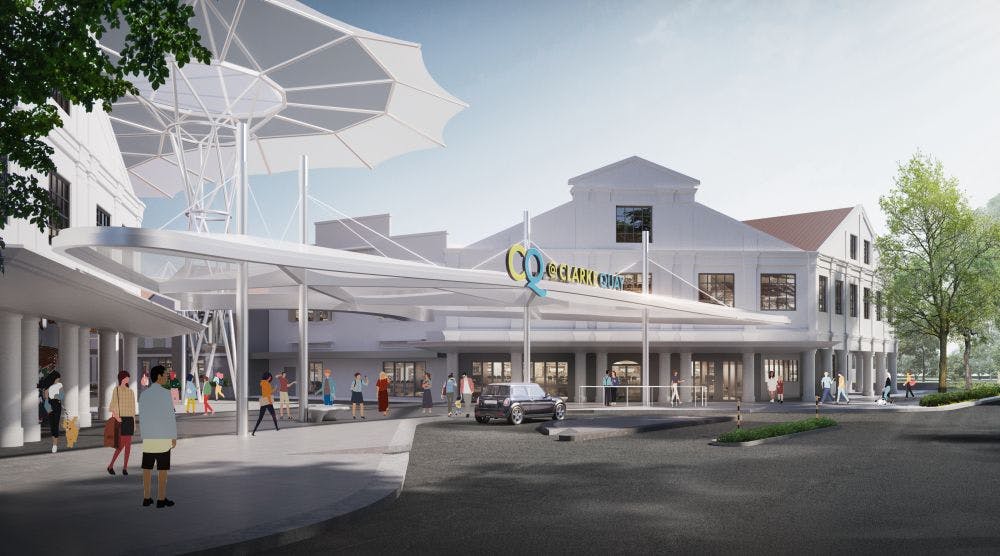The world is adding a New York City’s worth of real estate to its built environment every month.
This startling statistic was shared by Vinamra Srivastava, chief sustainability officer (CSO) of CapitaLand Investment Limited (CLI), in his keynote address at Eco-Business’ flagship “Cities: Possibilities” event in November 2022, at which The Liveability Challenge 2023 was launched.
The built environment generates 40 per cent of the world’s carbon emissions annually. Over the next 40 years, the world’s building footprint is expected to double, making its decarbonisation an urgent task. In 2040, about two-thirds of the building stock will be buildings that are already in existence today, making them more difficult and expensive to decarbonise.
The key to decarbonising the built environment is two-fold. New buildings need to be greener, consume less energy and water, and produce less waste. Older buildings require retrofitting and enhancement to improve their efficiency.
Sustainability-minded developers and real estate investment managers are discovering new innovations to lower the carbon footprint of their projects. One of them is CapitaLand Group, one of Asia’s largest diversified real estate groups. In 2010, it was one of the first Singapore-listed companies to produce a global sustainability report. In 2015, it became a signatory to the United Nations Global Compact; in 2017, it pledged support for the Task Force on Climate Related Disclosures.
Its 2030 Sustainability Master Plan, announced in 2020, pledged to reduce its carbon emissions intensity by 78 per cent by 2030. In 2022, CLI also elevated its commitment by pledging to achieve Net Zero by 2050.
One of its more recent sustainable projects is the redeveloped Funan, an integrated development with a 18,000 sq ft food garden, a 5,000 sq ft urban farm and a climate-friendly refrigerant chilled-water system that prevents about 5 kilotons of CO2e being emitted.
It is a real estate company with one of the largest rooftop solar facilities in Singapore – as of December 2021, the solar panels installed on 11 of their properties produce more than 11,000MWh of electricity per year. These have helped them to avoid over 4,450 tonnes of carbon emissions per year, and it intends to install more solar panels in the future.
The company is presently revamping CQ @ Clarke Quay, a heritage conservation area along the Singapore River. Some of the buildings at the site, which now comprise lifestyle, F&B and entertainment outlets, were originally constructed in the 19th century, and the challenge lies in combining green and modern features to further reduce CQ @ Clarke Quay’s carbon footprint while maintaining its historical value.
In this interview, Vinamra shares with Eco-Business how CapitaLand addresses the challenges of decarbonising our living and working spaces while preserving our historical, cultural and biodiversity landscapes, and what “liveability” means.
What are some of the ways we can make new buildings more green and liveable?

CapitaSpring, an integrated building with office and service apartments, has a rooftop urban farm and four storeys of greenery with approximately 80,000 plants that help mitigate its heat impact. Image: CapitaLand Investment.
The most basic principles to follow, when designing and developing a building from scratch, are for it to have a low energy, water and waste footprint.
We took this approach when we built CapitaSpring in the heart of Singapore’s financial district, one of our newest integrated developments in Singapore. The design of the building focused on low electrical consumption, and the harvesting and recycling of water. We also reduced the impact of the sun’s heat by including a four-storey green oasis within the building.
CapitaSpring has been accorded the Building and Construction Authority Green Mark Platinum Award. Other than meeting the best possible green rating standards on energy, water and waste, liveable buildings should include lifestyle-related features that take into account the wellness of the people who reside in and use it.
On CapitaSpring’s roof on the 51st floor, there’s an urban farm providing fresh ingredients for two of the restaurants in the building. The more than 80,000 plants from more than 130 different species within the development help to mitigate the urban heat island effect, while also enhancing workplace wellness for building occupants.
The building was also designed to support the government’s vision for a car-lite Singapore with the inclusion of 165 bicycle lots, end-of-trip facilities, and walking and cycling paths that connect with the area’s cycling network.
How can we balance the preservation of the historical or cultural value of older buildings while giving it modern features that will reduce its carbon footprint?
Every building sits within a community. Retaining the cultural identity and social value of a building – and even its economic value – is not at odds with greening the building through retrofits and asset enhancements, but you need to take into account the responses and feedback of the community that you’re going to serve.
Raffles City in Changning, a district in Shanghai, China, is located at the site of St Mary’s Girls’ School, which was founded in 1881. During the development of Raffles City Changning, heritage buildings that were part of St Mary’s, including the former science laboratory, chapel, dormitories and dining hall were restored and preserved as part of the new development. Restoration works include reconstructing building frames with reinforced concrete, restoring building elevation and outlook, restoring all elevation features and adopting modern thermal insulation, fire and water proofing layers on the building envelope and roof. In addition, recycled bricks from the demolished old buildings were used in the construction of the Gingko House, a memorial built to remember the rich heritage of the site, which is located beside a gingko tree that is over 100 years old.

Raffles City Changning. Its development took into account the restoration and preservation of the heritage buildings of St Mary’s Girls’ School. Image: CapitaLand Investment.
For CQ @ Clarke Quay in Singapore, where we have begun a major asset enhancement initiative, approximately a third of the project cost has been dedicated to green features such as a more energy-efficient chiller and a new ETFE (ethylene tetrafluoroethylene) canopy that will reduce solar heat gain by up to 70 per cent. A new omni-directional angel fan will be installed to enhance air circulation, while achieving more than 50 per cent in energy reduction as compared to the current single-directional fan. The new fan is also equipped with evaporative mist cooling, which can lower the environmental temperature by approximately 2°C without creating water droplets on surfaces.
It is important that retrofits and asset enhancements will preserve buildings of such rich historical and social value as well as bring environmental gains – all while making the community’s experience of being there more enjoyable.

Artist’s impression of the revamped CQ @ Clarke Quay, which is expected to be ready by the third quarter of 2023. Image: CapitaLand Investment.
What does “liveability” mean to you? How can Singapore do better to make itself more liveable for all classes and communities of people?
“Liveability” is a very broad term. Even though the cost of living in Singapore is high, it’s always right at the top of the lists of best cities to live in the world.
One reason for this is that Singapore has a very competitive economy that enables a thriving workplace, and this attracts talent from abroad. The earlier generations of leaders and government agencies worked hard to make Singapore competitive both within Asia and globally.
Secondly, liveability has to do with the environment. Even before the Singapore Green Plan was implemented, one of the country’s top priorities was to develop a city that was extremely green and environmentally friendly. Former Prime Minister Lee Kuan Yew was insistent that the growth of Singapore as a financial and manufacturing hub should not be at the expense of the environment. Our urban planners have ensured that the landscape, green cover and water supplies have been aligned in an environmentally sustainable way.
With the Green Plan and upcoming carbon tax, the country is looking to strengthen its climate resilience and sustainable development by 2030.
Thirdly, what constitutes liveability is quality of life: education, healthcare, safety and security and recreation. These create an environment that is conducive for families, and communities are happy to live, work and play here.
So even though Singapore might be a costly city in which to live, it’s one with good economic opportunities based on meritocracy, and where the community feels supported. The challenge will remain on how to do this while remaining environmentally sustainable.
How can a natural resource-scarce city like Singapore become more self-sufficient in terms of energy, food and supplies?
Innovation is a key way in which both countries and private sectors can overcome the challenge of scarce natural resources.
CapitaLand supports the search for new innovations in several initiatives. First, we have the CapitaLand Sustainability X Challenge, the first global sustainability innovation challenge by a Singapore-based real estate company, to source for technologies to address challenges in areas such as low carbon transition, water conservation and resilience, waste management and circular economy, and health, safety and wellness in buildings. The third edition of this challenge will be launching during the first half of this year.
We have also launched the CapitaLand Innovation Fund, worth S$50 million, to support the testbedding of sustainability and other high-tech innovations in the built environment space.
The Smart Urban Co-Innovation Lab at Singapore Science Park was also initiated by us for our industry partners to develop and pilot their solutions.
By using different channels to source innovative ideas and solutions, and then providing them with financing and a portfolio to testbed in, we hope to find new sources of fuel, or more water and energy efficient designs, to overcome some of the challenges brought about by Singapore’s natural resource constraints.
What are some of the climate-related challenges you’ve faced in operating in various countries with their very diverse climate needs and governmental and social cultures?
What works in one geography may not work in another. For instance, India is extremely water scarce, but there is plenty of land available to invest in solar farms; whereas in Singapore, our high density of buildings means that we have limited land for the large-scale deployment of solar panels.
Mechanical and electric equipment that work in a colder country may yield very different results in a tropical country. Different climatic conditions provide different challenges that we must innovate around.
Energy costs vary across countries, as do their distribution models. Technologies that make sense in one country financially may not achieve the same objectives in other countries, so we have to work with our business partners to come up with innovative business models that can work in their countries. There is no one-size-fits-all solution.
That’s why the search for innovation is important. We can discover a pool of solutions that fits different needs, and mix and match them to address a variety of situations. And when something works well in one place, we can scale it up and adjust it to meet needs elsewhere.
There are also meaningful social differences that impact the types of sustainability initiatives that can be taken in different countries. Different geographies and cultures have varying views on how they approach waste collection and recycling, and some markets are more progressive than others on educating the public and schools on sustainability. We need to see what’s most relevant geographically and culturally, and design our solutions and campaigns accordingly.






















